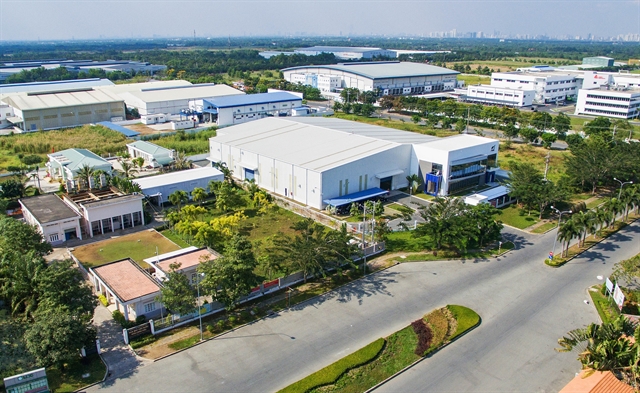Now, as the world may be seeing a relocation trend as a result of adverse impacts on global supply chain during the COVID-19 pandemic as well as rising pressure from the US-China tension, Việt Nam is having a big chance to attract this “relocated” foreign capital.

Foreign direct investment (FDI) is an unarguably integral part of Viet Nam’s economy which has contributed significantly to the country’s economic growth over the past 30 years. Now, as the world may be seeing a relocation trend as a result of adverse impacts on global supply chains during the COVID-19 pandemic as well as rising pressure from the US-China tension, Viet Nam is having a big chance to attract this “relocated” foreign capital.
Viet Nam somewhat missed the opportunity to attract foreign investment after the Asian financial crisis in 1997-98. Later, with the Viet Nam-US bilateral trade agreement, Viet Nam-Japan Joint Initiative and especially its accession to the World Trade Organisation (WTO) in 2007, the new wave of FDI had arrived in Viet Nam.
In recent years, with an average growth of more than 20 per cent per year, FDI capital has positively contributed to shoring up Viet Nam’s economy. Its share in GDP increased from 2.1 per cent in 1989 to about 20 per cent in 2018. Exports of the FDI sector increased rapidly, accounting for an increasingly large proportion of the total export turnover.
Yet, the effect that FDI has brought to the country is still far from our expectation which could be seen in all important dimensions such as limited spillover effect, technology transfer and low value added. The issue of attracting high quality FDI has become more urgent than ever.
For the first time after 30 years of opening for foreign investment, the Politburo last November issued Resolution No 50-NQ/TW on orientations to tighten policies to improve quality and efficiency of foreign investment by 2030. The resolution is expected to open a new era in FDI attraction, helping Viet Nam attract a new generation of higher quality FDI.
However, as many other countries in the region are also rushing to attract foreign capital which is seeking to leave China, besides the requirement of “increasing the standard” to welcome potential quality investors, Viet Nam needs a distinct policy.
Construction and development of industrial clusters should be put on the table now.
Hundreds of industrial zones and dozens of border-gate economic zones have been established across Viet Nam in previous years which have contributed significantly to the country’s industrialisation process and economic development. However, they have yet to create a breakthrough in Viet Nam’s growth model transformation.
There are many things to discuss about industrial clusters, but a cluster-based approach is a way to build production networks and value chains, develop support industry and improve the capacity and the competitiveness of Vietnamese enterprises, especially in the context of the country's deep global integration and the strategic shift to attracting quality FDI.
Harvard Business School’s Michael E. Porter (2003), who is recognised as the founder of the industrial cluster concept, defined a cluster as a geographically proximate group of interconnected companies, suppliers, service providers and associated institutions (such as trade associations, universities, technology transfer centres, etc.) in a particular field that compete but also cooperate.
Boundary concepts can change in a “flat” world thanks to technological advances and the digital age. But the essence of an industrial cluster which makes it different from the classic definition of an industry sector is its effective connection of all parties involved in production and business activities, value chains, supply chains and the emerging role of a pioneer company/leader, small and medium enterprises (SMEs).
Cluster development will create positive externalities thanks to technology diffusion, sophisticated labour allocation, better access to capital and cluster brand building. Benefits are also multiplied by stronger stakeholder networks. However, clusters can also have negative effects such as "lock-in effect", inhibiting competition, relying on existing technologies and hindering innovation.
In Viet Nam, many craft villages, industrial zones and economic zones sharing specialised production and business activities were formed contingently on certain conditions (history, location) and developed without intentional intervention of the Government or local authority. Some important clusters include oil and gas in the Southeast, tourism in the Central region, agricultural production in the Mekong Delta, production hub of textile, footwear and electronics around HCM City and clusters of heavy industries in the North.
However, the existing clusters lack sustainability with limited inter-connection both inside and outside the clusters. In addition, support for related activities, industrial accumulation, value chains and production networks has not received adequate attention and support from the authorities and industry associations. These clusters also lack long-term and sustainable programmes that bring benefits to enterprises.
Both theory and practice have shown the biggest risk of cluster development is that it is not easy to have an appropriate policy, as well as policy implementation is an issue because of the complexity due to many stakeholders. Vested groups are also a major obstacle.
Basic conditions for the effective development of clusters include: (i) having leading/pioneering companies (quality FDI, especially multinational corporations); (ii) an efficient network of sourcing firms (developed supporting industry); and (iii) fundamental production factors such as human resources, technology, access to capital, business environment and basic infrastructure.
On these platforms, the linkages and relationships of cooperation, competition, supply, consumption and production of enterprises located in the cluster will be shaped and developed, creating a network of companies that supply input materials to produce the final products and services for domestic market and export.
One important factor is incentives and motivations to strengthen connection among stakeholders. These linkages must attract effective participation of research and development (R&D) organisations, education and industry associations. This requires certain economic development policies and industry development policies for the supporting industry, technology-education and business development, as well as the cooperation between the public and private sector, research institutes and universities.
Many years ago, the Central Institute for Economic Management (CIEM) supported by UNIDO completed the project on “Development of industrial clusters and industrial parks in association with the development of supporting industry to create production network and value chains”, but had not received adequate attention.
The project suggested policy intervention in the early formation of clusters (through initiatives to engage leaders or develop vertical/horizontal linkages between businesses and institutions). The Government also should identify the already existing clusters and the potential “seeds”. Promoting the support industry needs the development of SMEs.
Attracting quality FDI and leading companies is not only the preparation of clean land, good human resources, appropriate and global competitive incentives, but also the need for good thinking and policies to develop industrial clusters. The world does not stand still and Viet Nam should take this chance to present itself as an attractive destination for quality FDI. VNS
*Vo Tri Thanh is a senior economist at the Central Institute for Economic Management (CIEM) and a member of the National Financial and Monetary Policy Advisory Council. The holder of a doctorate in economics from the Australian National University, Thanh mainly undertakes research and provides consultation on issues related to macroeconomic policies, trade liberalisation and international economic integration. Other areas of interest include institutional reforms and financial systems.





